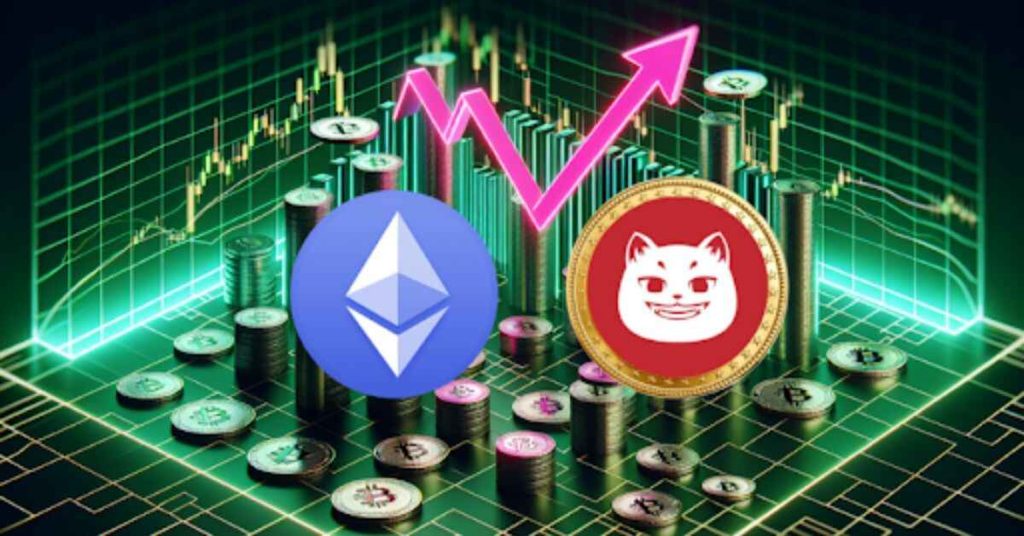The closing weeks of 2024 saw vintage crypto wallets waking and moving tens and hundreds of tokens to exchanges or other addresses. Public curiosity is by far not the only impact of such transactions. Let’s see how the whale transactions influence the market and why not everyone is happy about them. Table of Contents The whales’ transactions Christmas rampage When whales hold When whales sell Alleged market manipulations Crypto whales: friends or foes? The whales’ transactions Christmas rampage On Dec. 25, 2024, the Bitcoin wallet that was kept untouched for nearly 14 years moved 20.55 BTC to another address. During the years in the wallet, these coins gained over $2 million in value. The same day, a different wallet released 210 BTC after ten years of inactivity. This BTC stash grew by $20 million while being hodled. Two days later, someone moved 1,940 ETH from the pre-mine address to Coinbase. These ether tokens were dormant from the launch of the Ethereum network. The following days saw other huge transactions involving long-time sleepers. Read more: 200k Ethereum genesis whale awakens: $11.37m sent to Kraken For instance, on Dec. 29 it was reported that someone sent 7,000 BTC from the address that was inactive for seven years to several different addresses, splitting the sum into seven 1,000 BTC outputs. This chad held on to 7,000 BTC for 7 years, hodled from 62M$ to 663M$, the funds haven't been sold they just split them into 1,000 BTC addresses. https://t.co/1FhOHUjUOH — Sani | TimechainIndex.com (@SaniExp) December 29, 2024 Reporters share the opinion that these bitcoins weren’t sold; they just moved to other wallets. In seven years, the 7k BTC stash value grew by several hundred million dollars. On the same day, the address that had been silent since 2014 sent 357.4 BTC to other addresses. When whales hold As of Dec. 30, 2024, there are four wallets holding nearly 650k BTC, which is over 3% of the total supply. All of these addresses are the cold wallets of the crypto exchanges. According to the Bitinfocharts tool, less than 100 Bitcoin addresses hold around 15% of the entire supply; many of these addresses probably belong to individuals. If they decide to move their millions worth of crypto coins, it may trigger a bearish reversal even in the uptrend. When whales hold their crypto, they decrease its liquidity. Just think of billions worth of cryptocurrency that has not moved for years! Almost half of all bitcoins are held in wallets that have between 100 and 10,000 bitcoins on the balance. This group of whales impacts liquidity and value the most. Many of them haven’t moved crypto for years, sometimes over 10 consecutive years, effectively keeping large amounts of crypto out of the market. When whales sell When whales get rid of their crypto, they signal other investors that someone who held millions worth of the asset in question decided that the asset isn’t worth it anymore. And everyone sees it! The whales’ transactions don’t go unnoticed, as thanks to the Bitcoin network’s transparency, these addresses are known, listed, and monitored. Each massive transaction makes headlines and triggers much talk on the Internet. Some people, especially those who don’t follow the trading/investment strategy or even don’t have one, fall for emotions and start to panic. When many people panic simultaneously, they may flip the market or increase the price volatility – not necessarily for a long period, but still. The whales who don’t want to cause disturbance dump their crypto gradually. Most transactions described in the previous chapter seemingly have one goal–the owners move crypto from the legacy Pay-to-Public-Key-Hash (P2PKH) addresses to modern wallets that provide better privacy and security. They cannot be attributed to so-called “whale dumping” that serves as a bearish signal. Alleged market manipulations On Dec. 27, 2024, the “Rich Dad Poor Dad” author, Robert Kiyosaki, took to X to accuse the BlackRock CEO Larry Fink of dumping Bitcoin. According to Kiyosaki, BlackRock is “suppressing Bitcoin price, so the whales can buy Bitcoin at under $100k.” Larry Fink dumping Bitcoin. VIVEK warned Larry Fink of BLACK ROCK is a Marxist. Vivek warned Fink & Black Rock are Share Holder Capitalist not Stake Holder Caplitist. Share Holder Capitalists are Marxist….like Klaus Schwab who state: “Someday you’ll own nothing and you’ll be… — Robert Kiyosaki (@theRealKiyosaki) December 27, 2024 Although we don’t have evidence to support or dispute Kiyosaki’s claim, we must admit that institutions and individuals holding large amounts of crypto are often subjected to such claims. The alleged market manipulation conducted by Tether is one of the best-known cases. The battle for the truth continues as of December 2024. Why would someone accuse whales of intentional price manipulations? First off, whales really can impact the prices. Whales may sell a large amount of BTC, sending the price down, re-buy what was sold during retracement at a discounted price, and enjoy profit made out of the price differences. Other tactics available for whales include rug pulls and wash trading. Ripple Labs admitted having used trading bots in the past. However, it doesn’t outrightly agree with the accusations of using them to manipulate the XRP price. Read more: XRP enthusiast refutes claims of price manipulation by Ripple Crypto whales: friends or foes? Just like the natural whales in the oceans, crypto whales are not friends or foes. Rather, they are large bodies minding their own business. If we know how they impact the market when they spend crypto, we can react to the whale alerts accordingly and avoid trouble. The only exception is the whales consciously manipulating the prices. However, the same means, namely, preparedness and caution, may save us from them too.


















